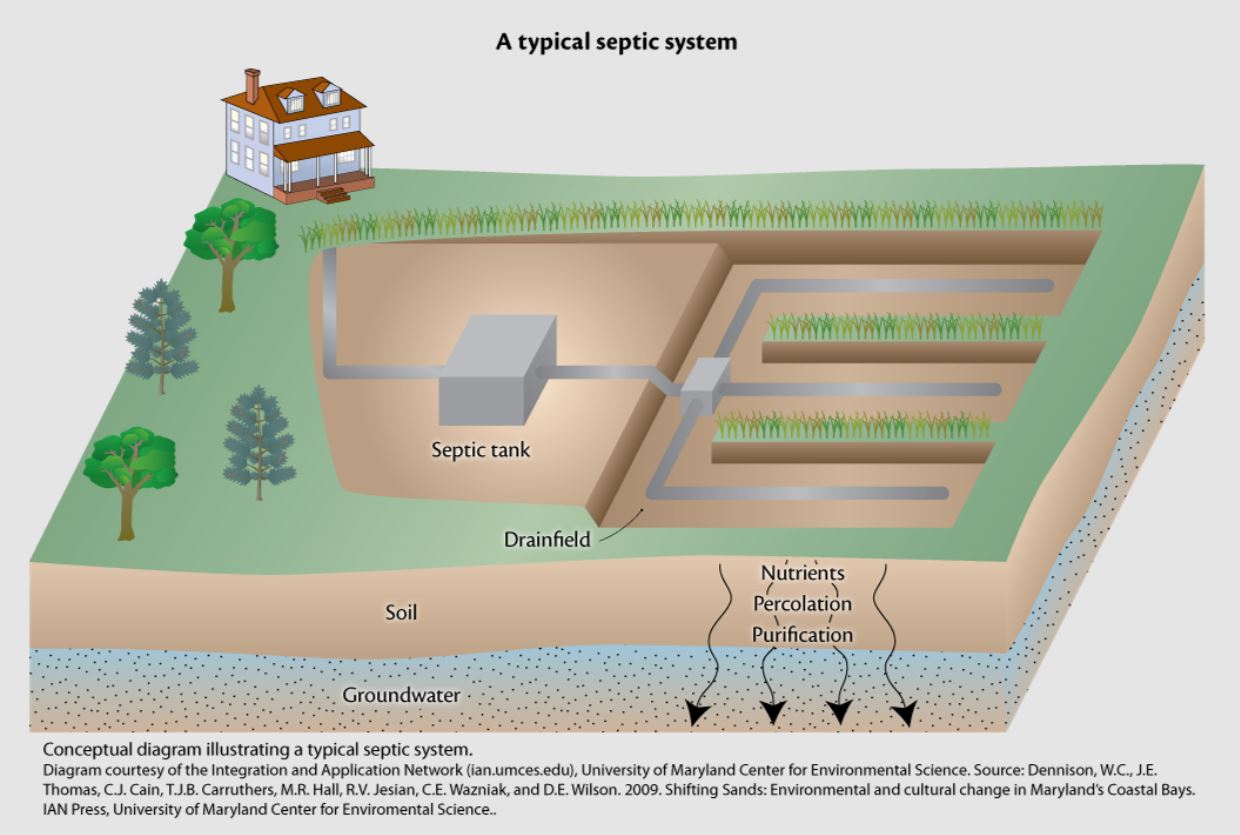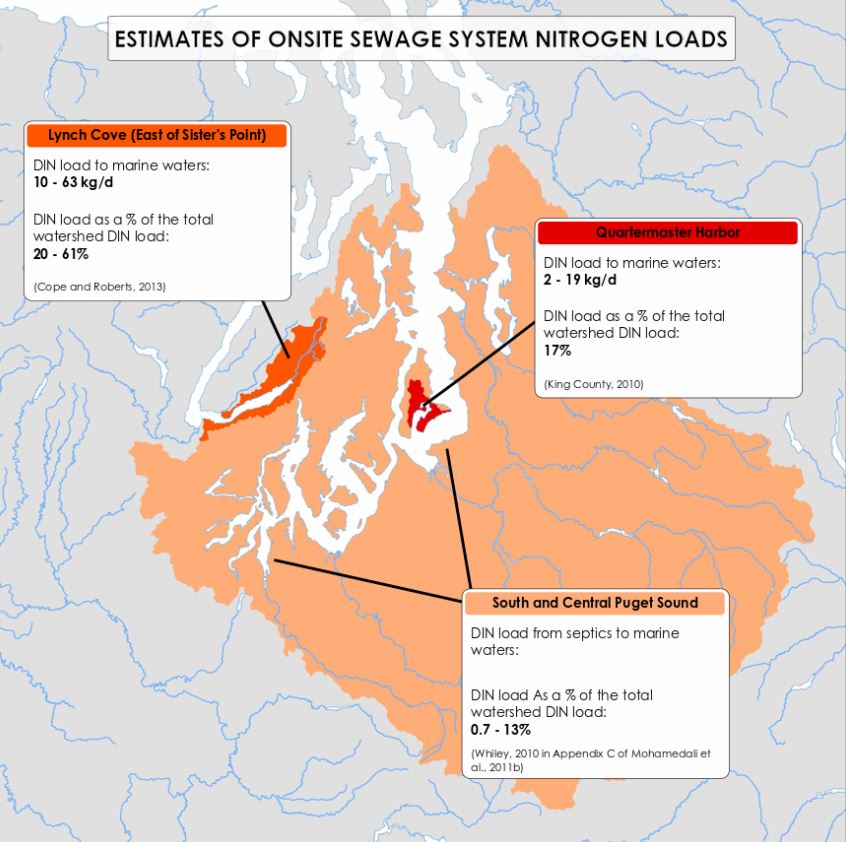Septic Systems
- Home
- Septic Systems
Septic Systems

Onsite sewage systems or onsite septic systems contribute nitrogen to both freshwater and marine water. Conventional septic systems are not designed to reduce nitrogen levels in human wastewater. Once nitrogen is discharged from septic system drain fields to subsurface soil layers, there are a number of processes that can lead to a loss of nitrogen (i.e. denitrification) before it enters a nearby surface water body.
Effluent from septic systems located closer to the shoreline will spend less time in the soil before it enters nearby surface waters, and therefore have higher nitrogen concentrations than effluent from septic systems located further inland.
The amount of nitrogen removal that occurs is difficult to quantify since it is challenging to accurately measure the nutrient transformations that occur as the effluent leaves the drain field and interacts with the soil layers and groundwater before entering nearby water bodies. This process is also highly variable due to differences in subsurface soil characteristics and groundwater flow pathways.
Nitrogen from septic systems
 This image summarizes the results of a few studies that have tried to estimate dissolved inorganic nitrogen (DIN) loading from onsite sewage systems to different sub-regions of Puget Sound.
This image summarizes the results of a few studies that have tried to estimate dissolved inorganic nitrogen (DIN) loading from onsite sewage systems to different sub-regions of Puget Sound.
Lynch Cove: 10 to 64 kg/day
This estimate is based on a comprehensive review of a number of other studies and available monitoring data. Shoreline seepage monitoring data collected by Mason County showed median and mean concentrations DIN concentrations of 0.23 mg/L and 0.65 mg/L, which were used to establish a low and high bound estimate of DIN loading when multiplied by shoreline groundwater flow estimates.
Quartermaster Harbor: 2 to 19 kg/day
This estimate is based on the number of people living along the shoreline, per capita effluent volume, and typical septic drain field nitrogen concentrations of 10 – 78 mg/L. This study assumed no transformation or reduction of nitrogen concentrations since the focus was on nearshore systems with limited potential for attenuation.
Study: King County, 2010
South and Central Puget Sound: 80 to 1,400 kg/day
This estimate was based on existing literature and past studies, using a mean effluent nitrogen concentration of 31 mg/L in septic system effluent. The analysis then involved the application of a spatial GIS approach, combined with a Monte Carlo-type analysis by estimating the number of people in Puget Sound who are not serviced by municipal wastewater treatment plants, average wastewater flows per person, and a nitrogen loss ranging from 10 – 70% due to attenuation. The actual loading varies within this range depending on what assumptions are made when performing the calculation and whether the loading estimate includes only septic systems located closer to the shoreline (< 150 m) or upland systems (> 150 m).
Nitrogen removal from septic systems
Most septic systems are not optimized to treat wastewater for nitrogen removal, so there is a need to evaluate treatment processes that are cost-effective, reliable, and low maintenance.
This table summarizes results from a 2013 study by the University of Washington and the Department of Health (DOH) that evaluated the effectiveness of three public domain nitrogen removal treatment processes, with the goal to produce effluent total nitrogen concentrations below 20 mg/L.
All three treatment processes evaluated produced effluent with total nitrogen concentrations well below the goal of 20 mg/L. The DOH is currently developing standards and guidance for the use of better treatment technologies as supported by the results of this study.
